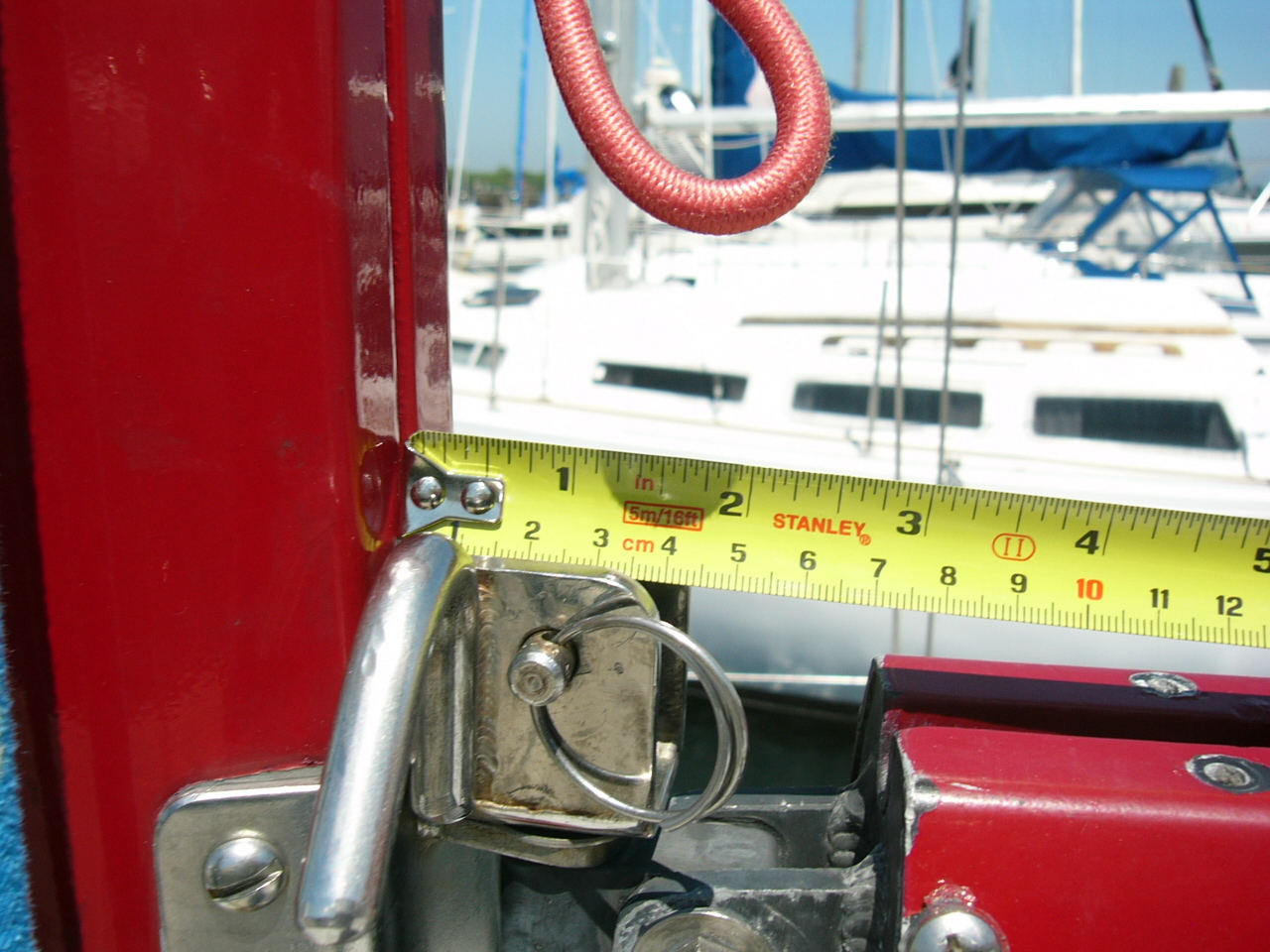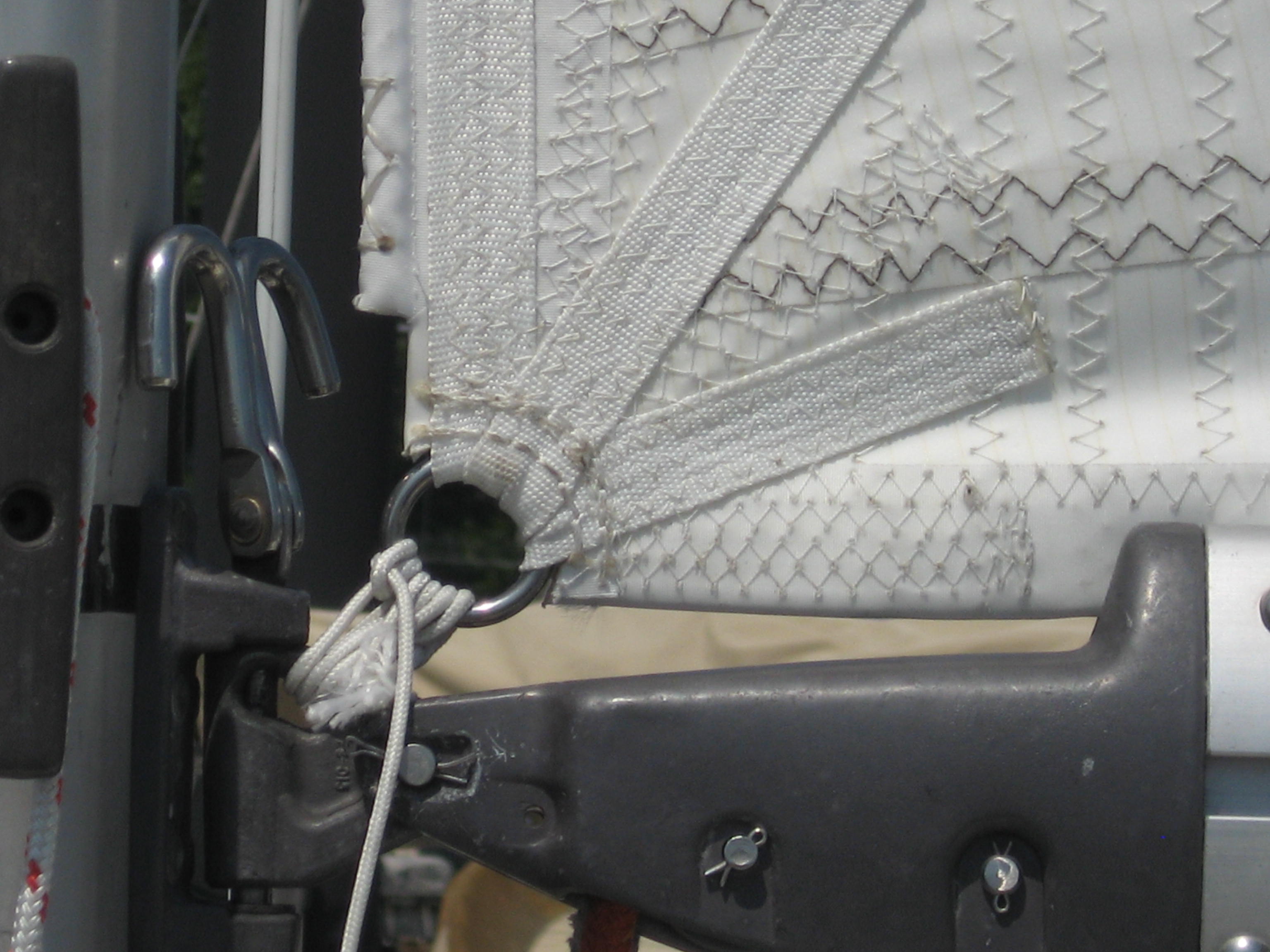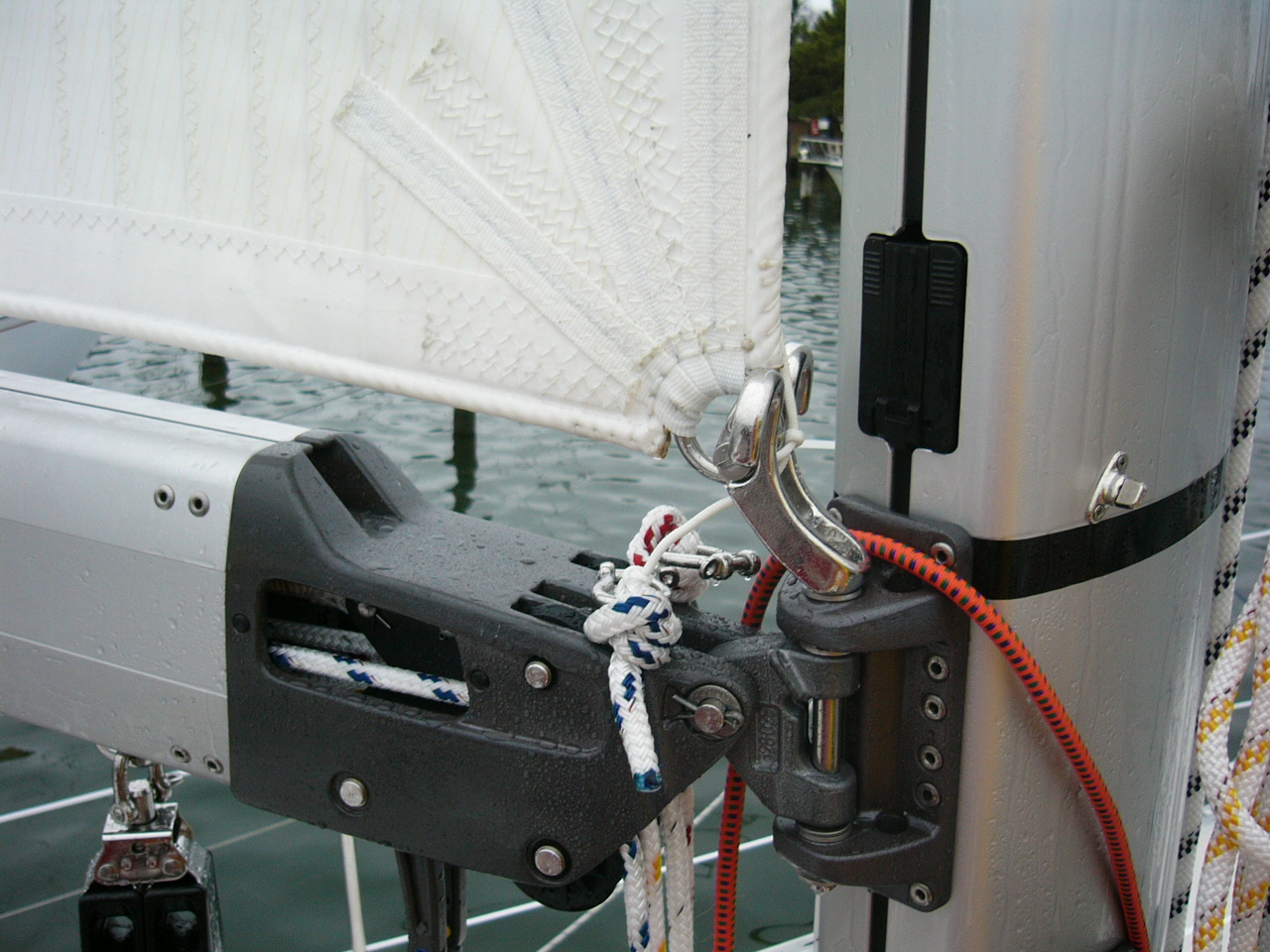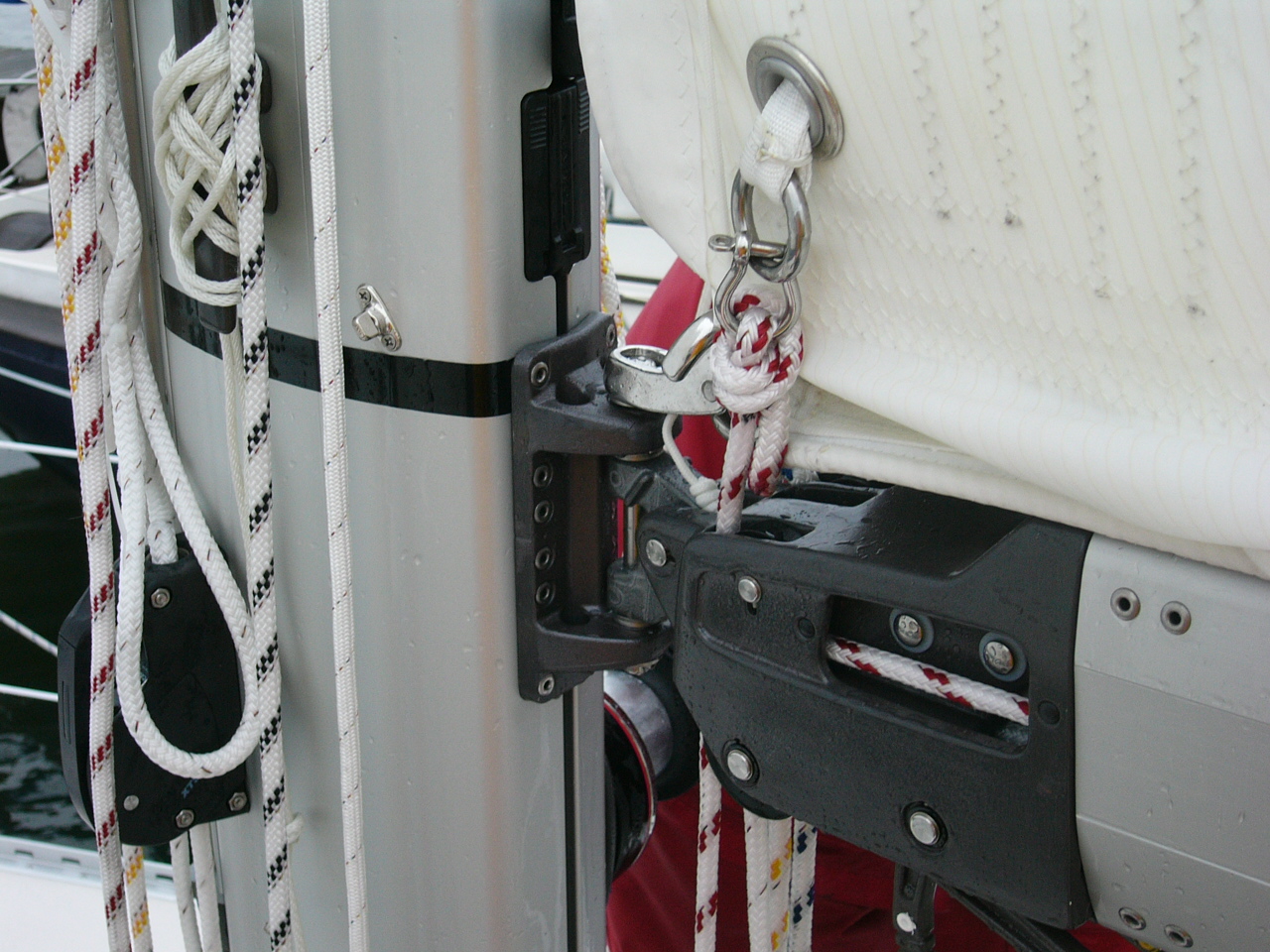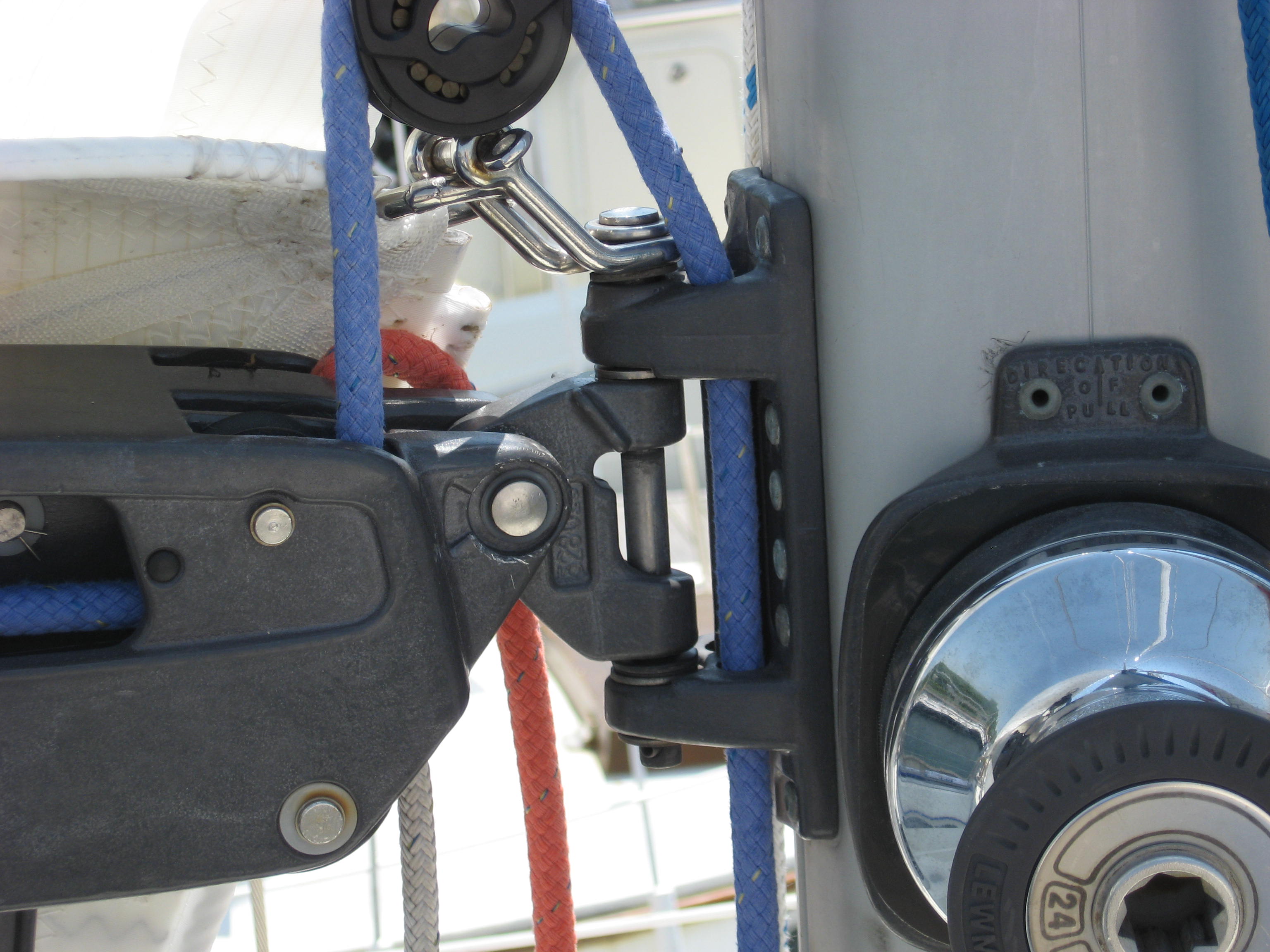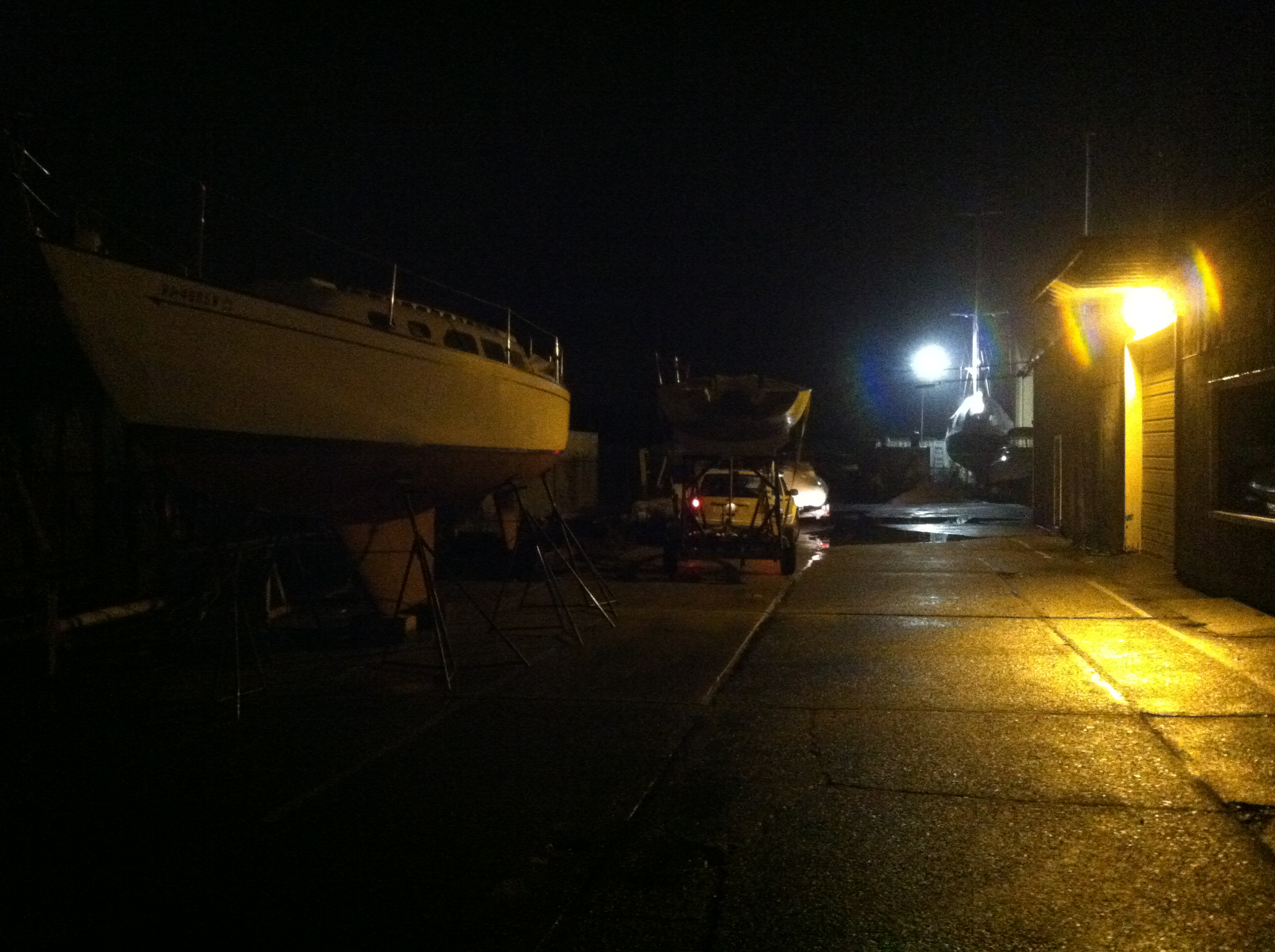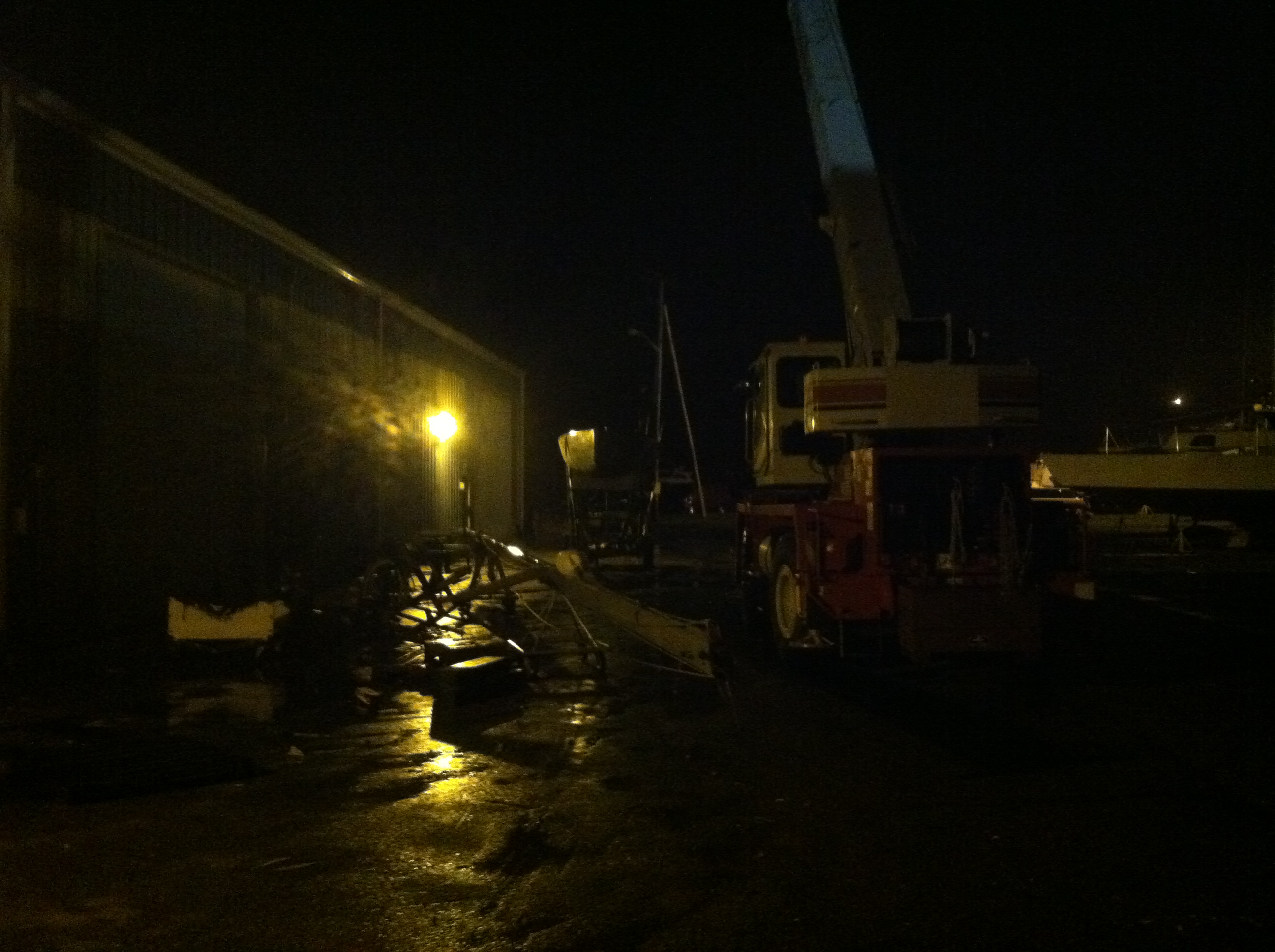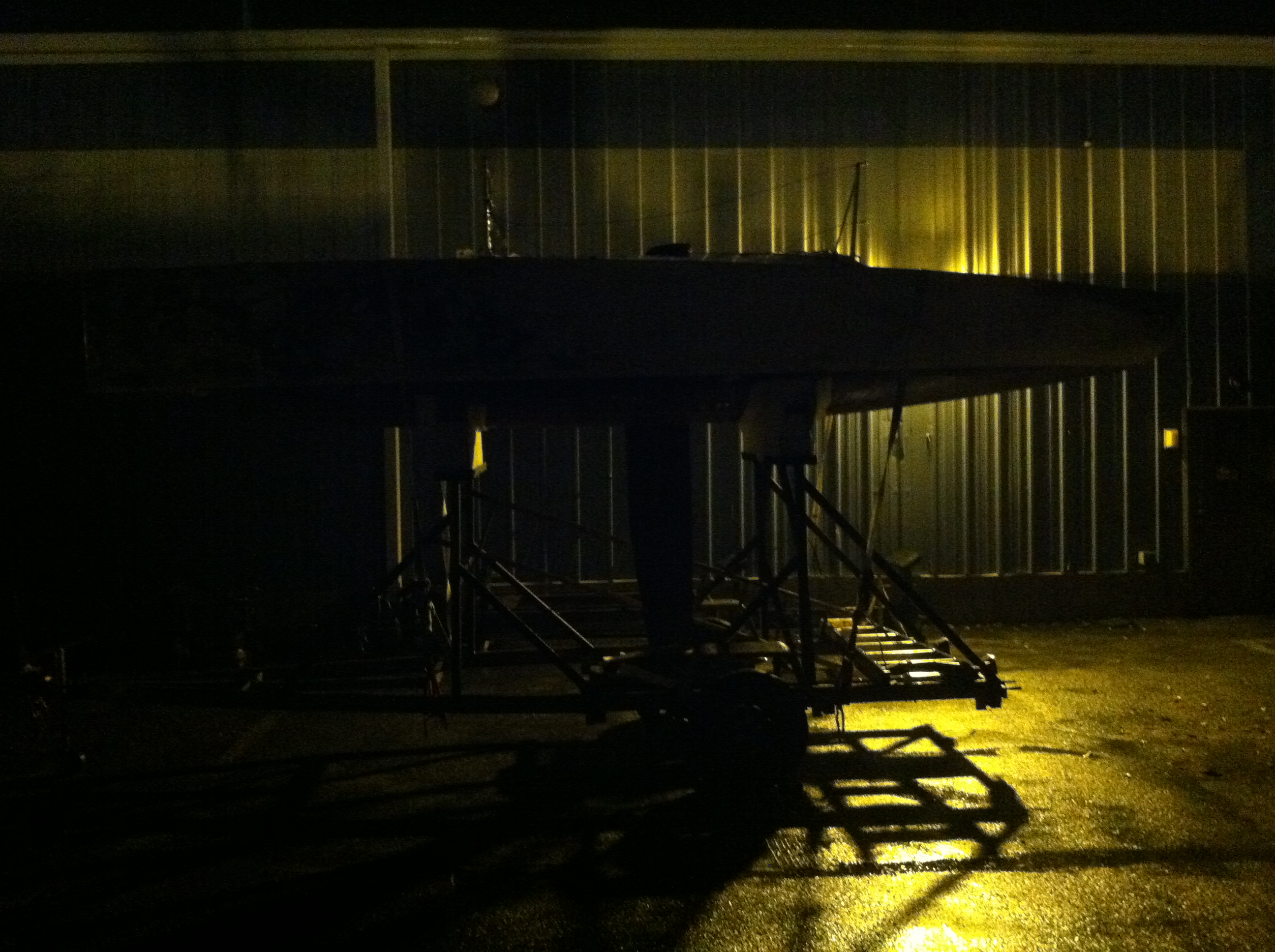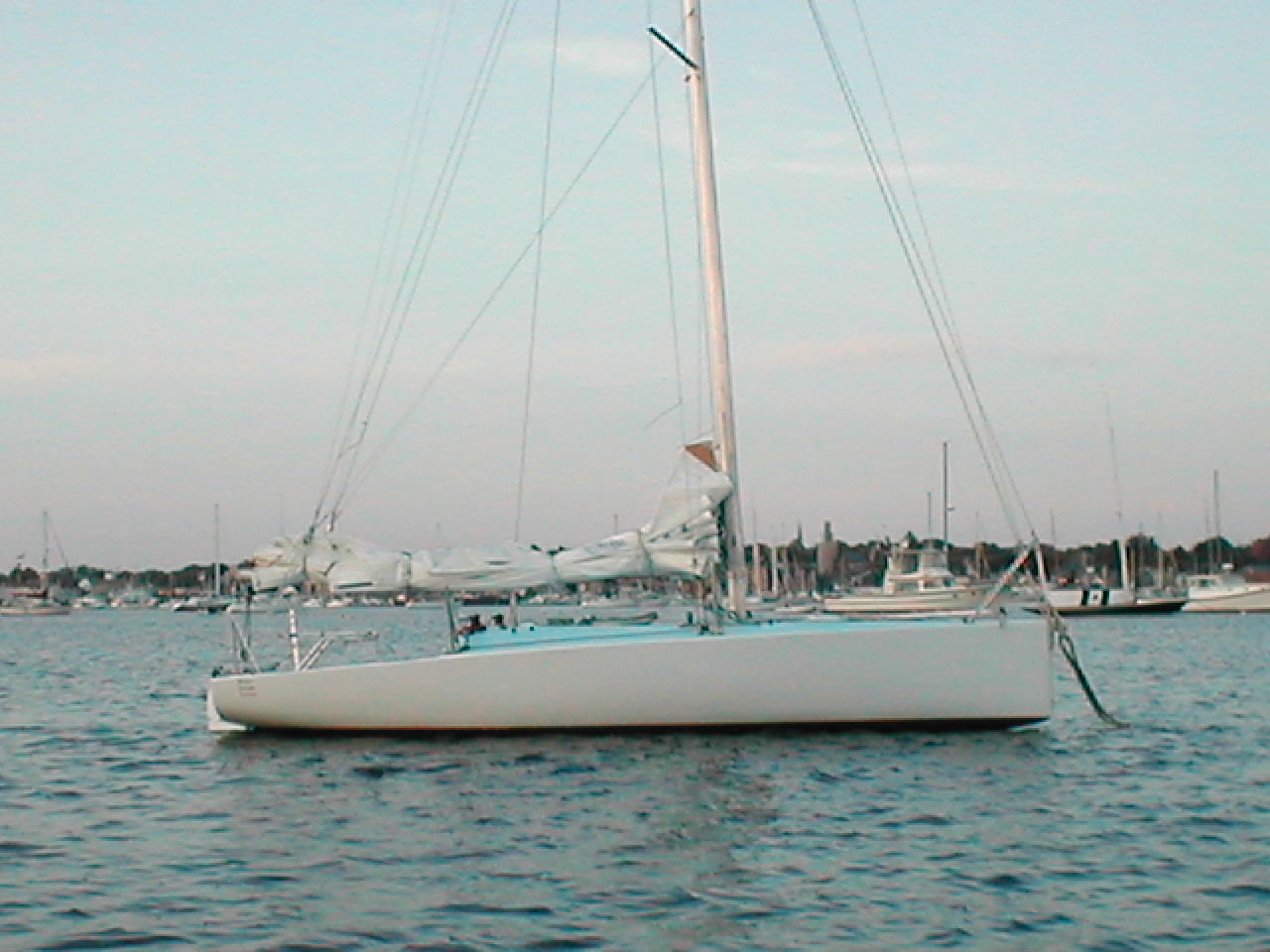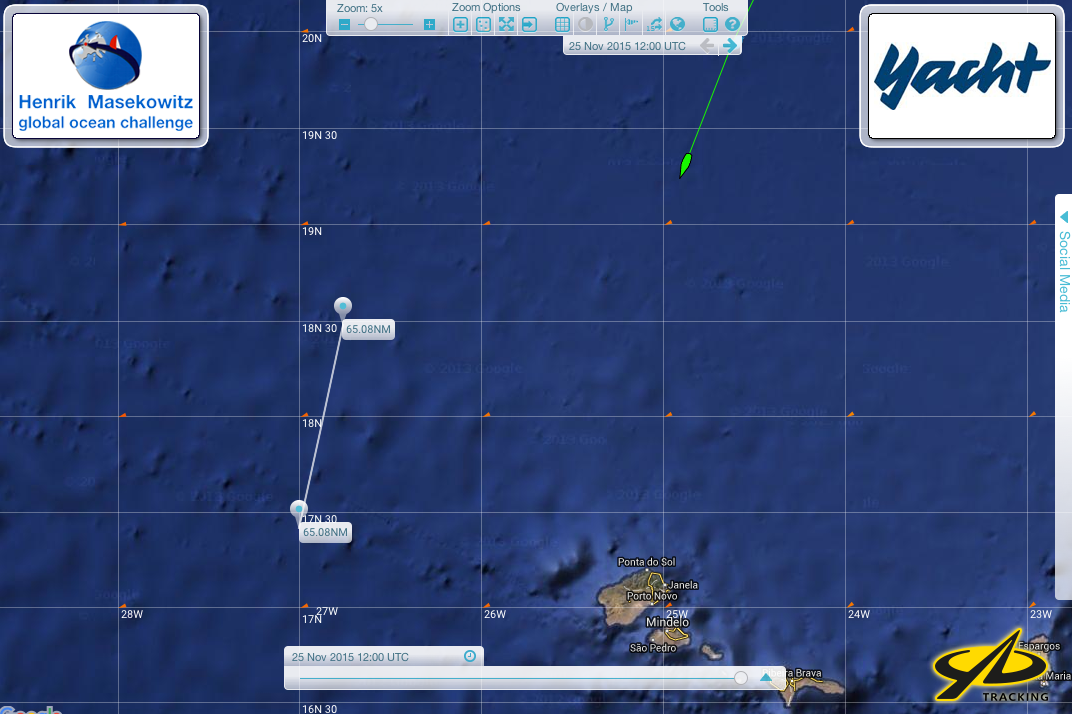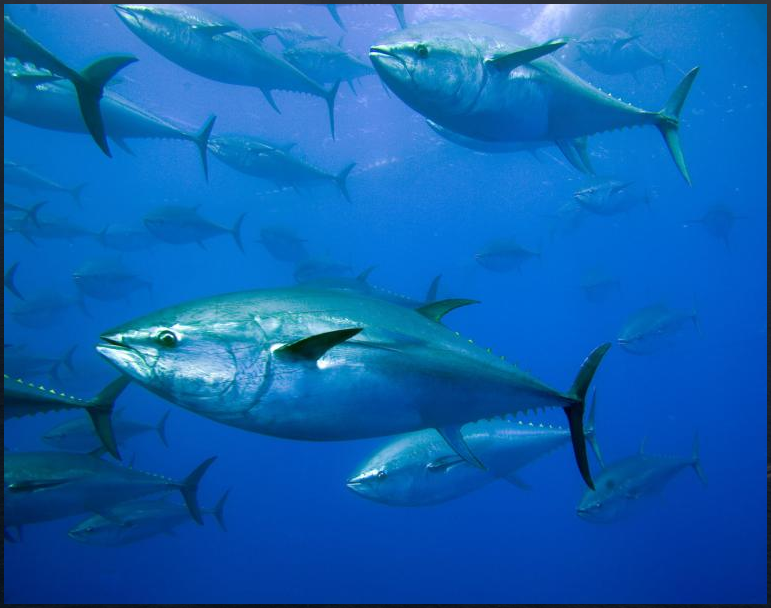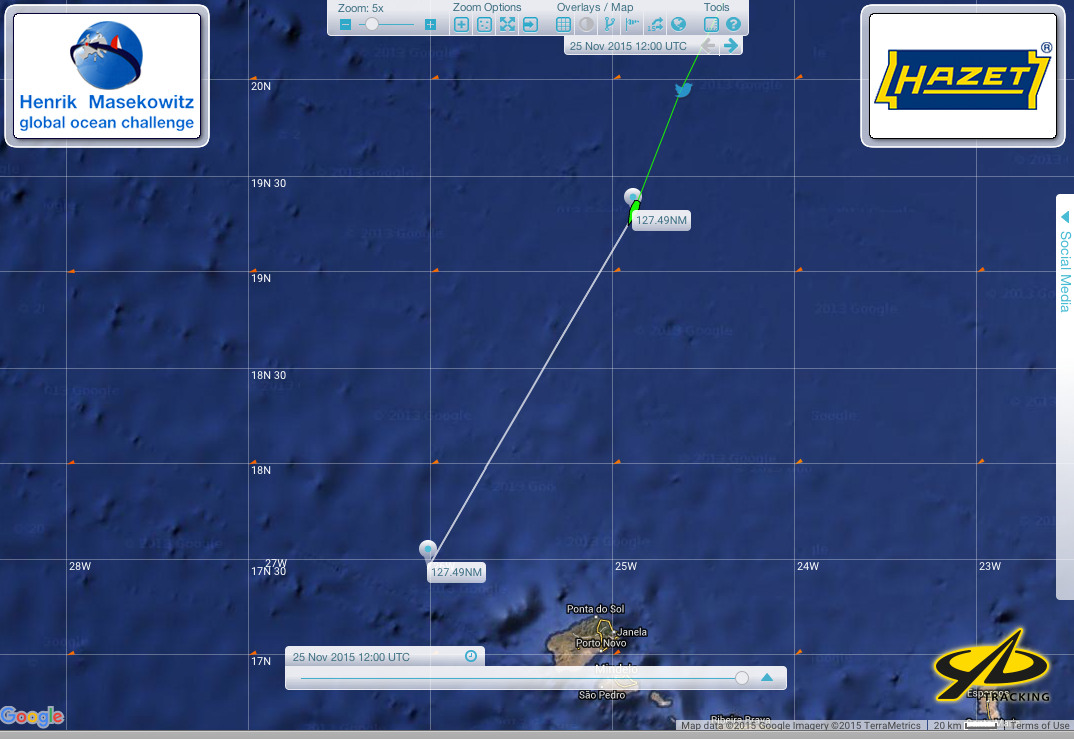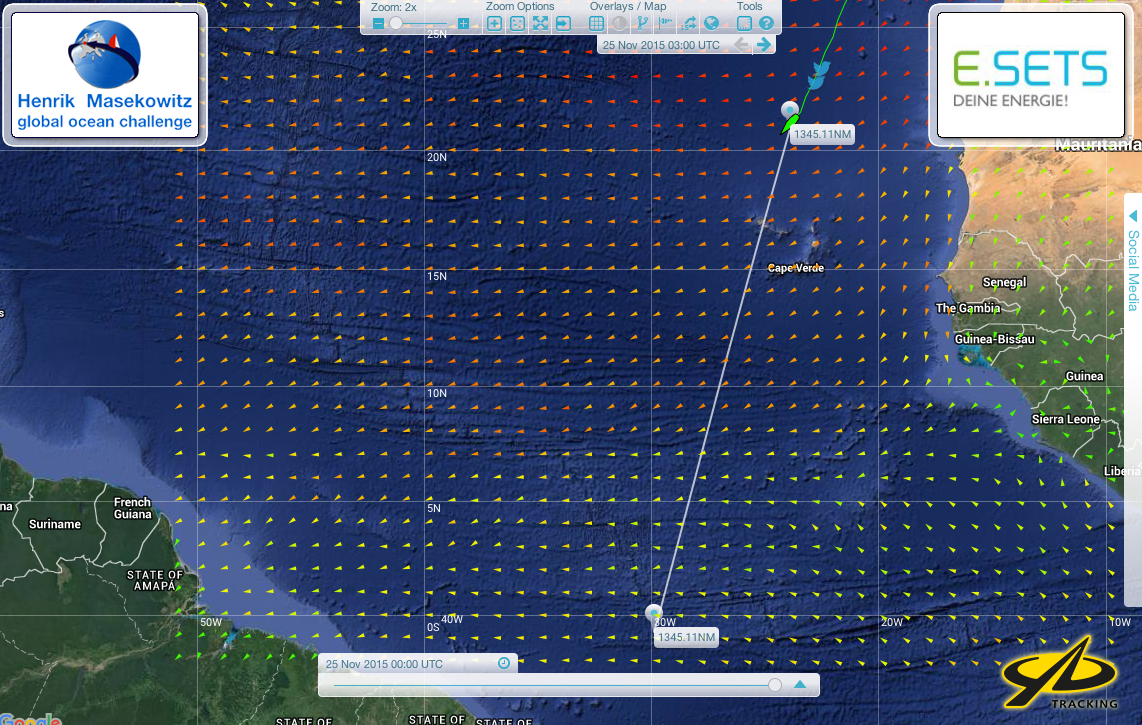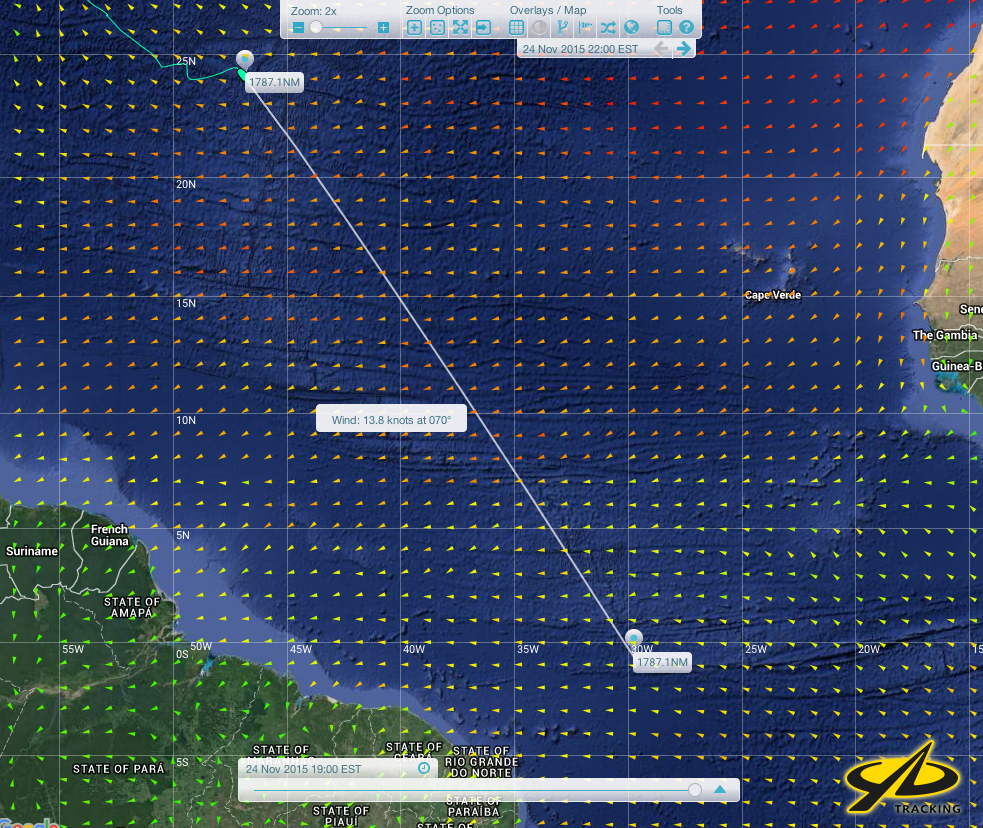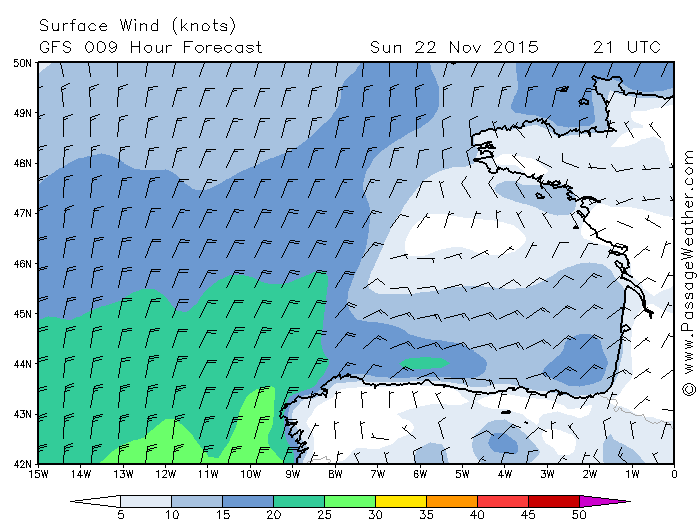Measuring for a new mainsail:
Sailmakers require many more details than just the luff and foot length and the color of the sail numbers. Here is a review of three of the core elements of the 10-15 details that are needed for a mainsail
TACK/REEFING DETAILS.
Getting the small details right is an important part of the thinking that most sailmakers put into the building of sails. If the following details are not right, they can have a visual or practical effect on the sail. This post will focus on the tack, clew and reefing information sailmakers need.
The TACK & REEF set backs are taken from the AFT face of the mast.
The Tack SET UP is taken from the top surface of the boom, In this image, below, I can get the tack set back: This is the distance aft from the aft face of the mast to the bearing point (Aft side of the pin of course) of the tack pin known as Tack Set Back. We abbreviate this to the TSB.
In this photo, below, the TSB is 3 3/4″
Tack SET UP, is the same idea but measured vertically from the top surface of the boom UP to the bearing surface of the tack pin as seen below. IN this case the TS UP is on the order of 7/16″ and the TSB is about 2.5 inches. And yes this is a dinghy, but the principals remain the same
BELOW: The TSB is measured FROM the aft face of the MAST to the FORWARD side of the tack pin, the bearing surface of the pin. In this case TSB is 20 mm. or /3/4″
Below: In some cases the tack set up is zero, or is noted as being in line with the bolt rope as on this Halberg-Rassey 31 with, again, Selden spars. The tack is secured with string because the tack shackle was missing the day I was there. And notice also the distance aft of the mast the bolt rope is. This sail had full length battens and so that hardware pushes the sail ‘skin’ aft too.
BELOW: this is a detail of the tack area of a Saga 40 with a Selden Spar. In this case the boat will not use the ‘J’ Hooks because it has single line reefing.
BELOW: Reef Ring Set back on the same boat. In this instance the boom has a single line reefing arrangement where the luff reef line exits at the top of the boom and attaches to the reef tack. This naturally enough causes the bearing surface of the reef grommet to be some distance aft, like about 4+ inches in this case. IF the RRSB is too far forward, THEN the sail will drift aft until it is restrained by the reef line. IN this case it is most likely to place a heavy load on the slide immediately above the reef point. Worst case scenario, this slide will tear the sail.
BELOW is another version again on a Selden mast, of the same kind of detail. IN this case the line goes thru a block in order to reduce the (tremendous ) friction that single line systems have. In both these setups one needs to be careful to not grind the luff down on top the blocks on the top of the boom, or in the case of the version above, onto the tack fitting and related metal work as it is here. This was a test set up a the dock. We subsequently marked all the lines.
BELOW: These so called ‘floppy rings’ make it a lot easier to get the ref secured to the ‘J’ hooks, rather than trying to bend the cringle in the sail bent around the hooks.
I can also get the same detail for the reefing arrangement at the luff of the reef. The two inverted metal “J”s receive the luff reef ring. Called by Sailmakers the Reef Ring Set Back, RRSB. We would put “floppy rings” in the luff reef in this case.
OLDER WOODEN BOATS: With roller reefing booms. The details on these booms/goosenecks clew ends are a little bot more tricky. As seen below, the tack shackle is a long way aft, I have seen as much as 6 inches. IF this is not captured in the sail, AND the tack ring in the sail is not the right amount of setback, the loads really come on the first second sometimes third slide above the boom.
BELOW: this older Alden design has an original roller reefing boom from the 1950’s or earlier. There are two details here. ONE is the big Tack Set Back. There other detail is there is not reefing mechanism, no obvious and easy way to secure a reef in the mainsail
SO: Tack set back is that distance aft of the mast at which the bearing point of the pin that takes the tack load is located.
SO: Reef ring set back is that distance aft of the mast at which the bearing point of whatever secures the reef grommet takes the load.
CLEW details



